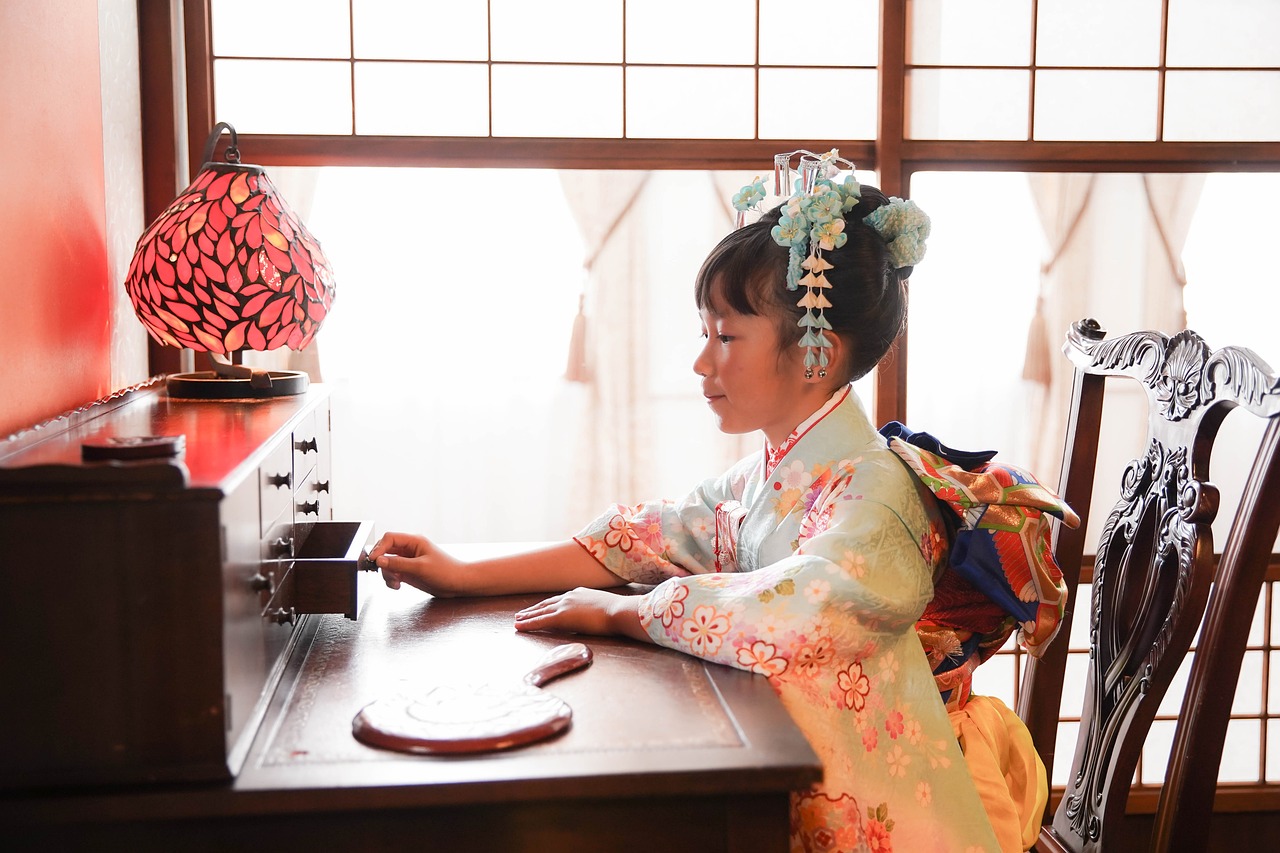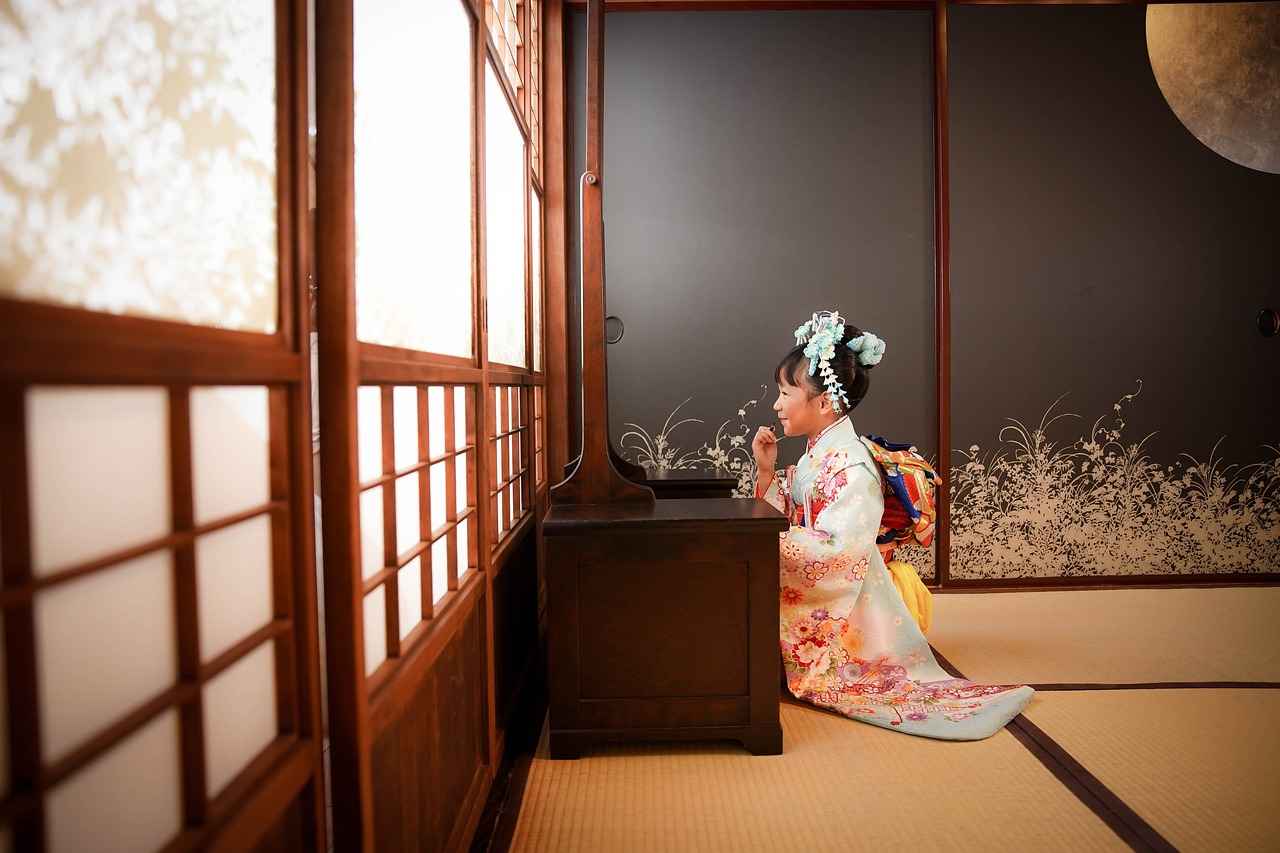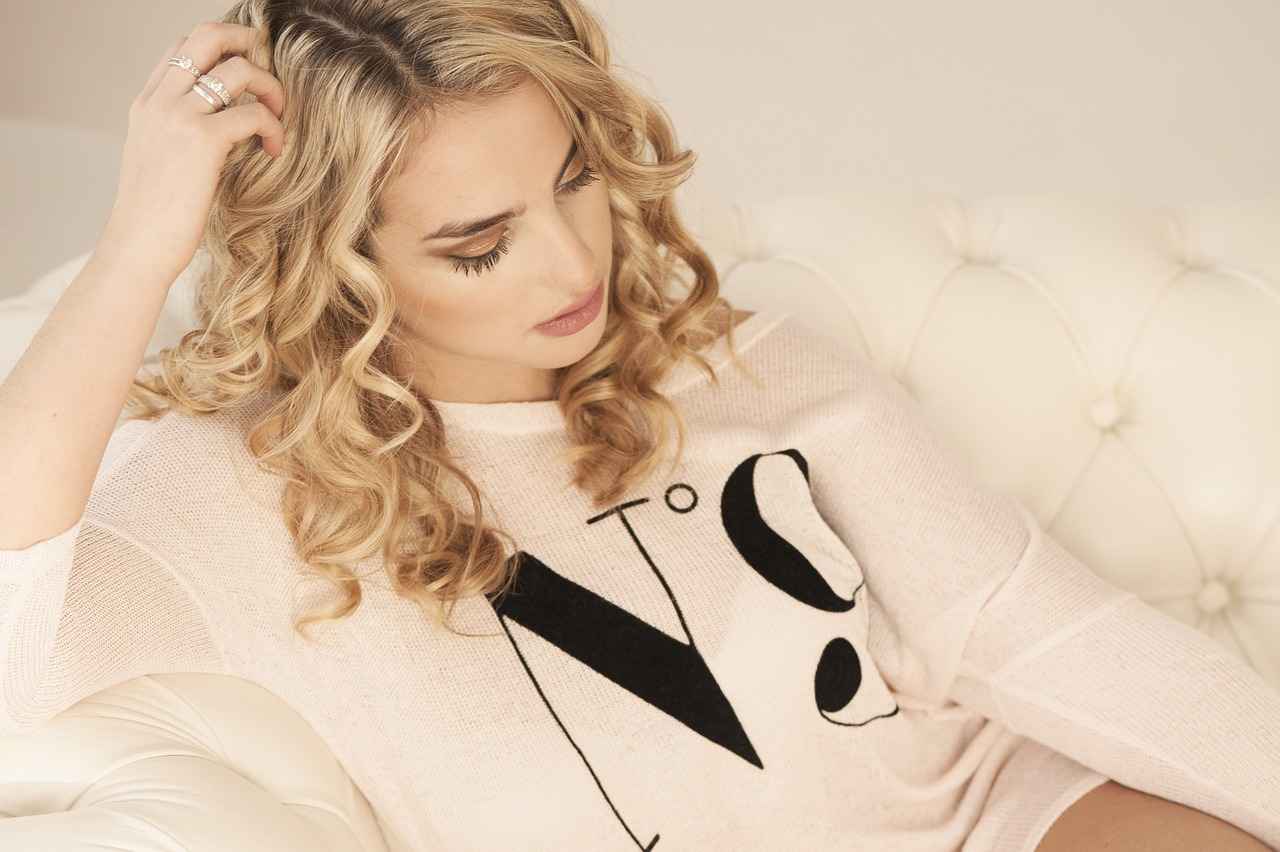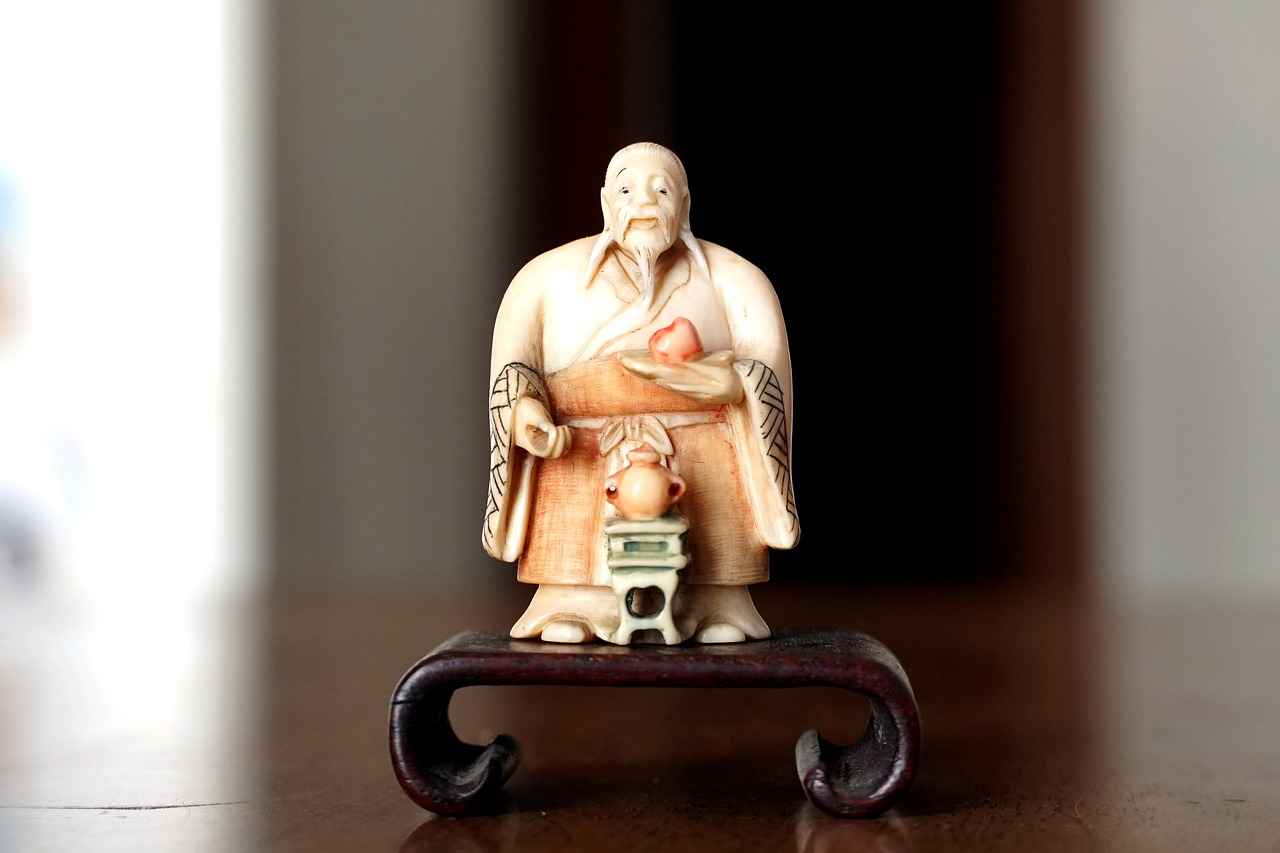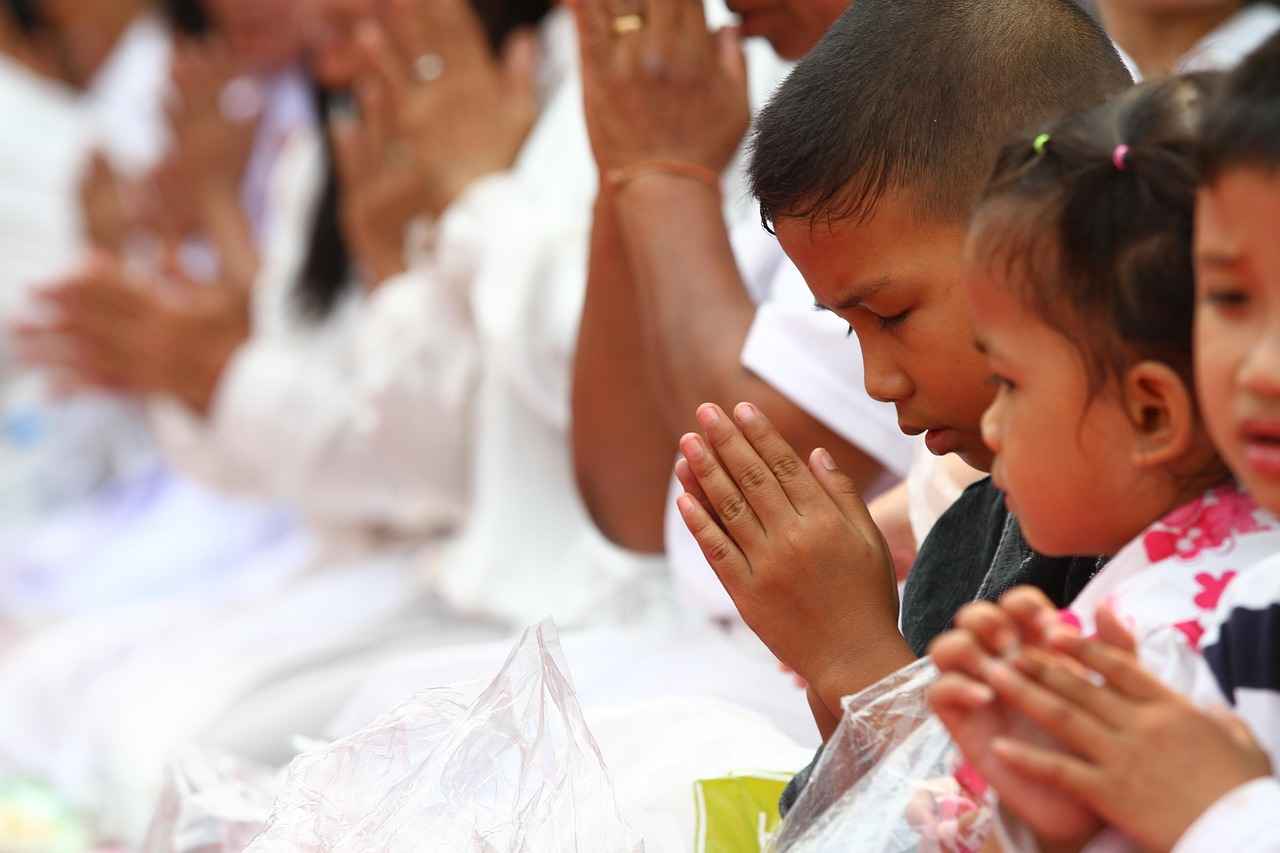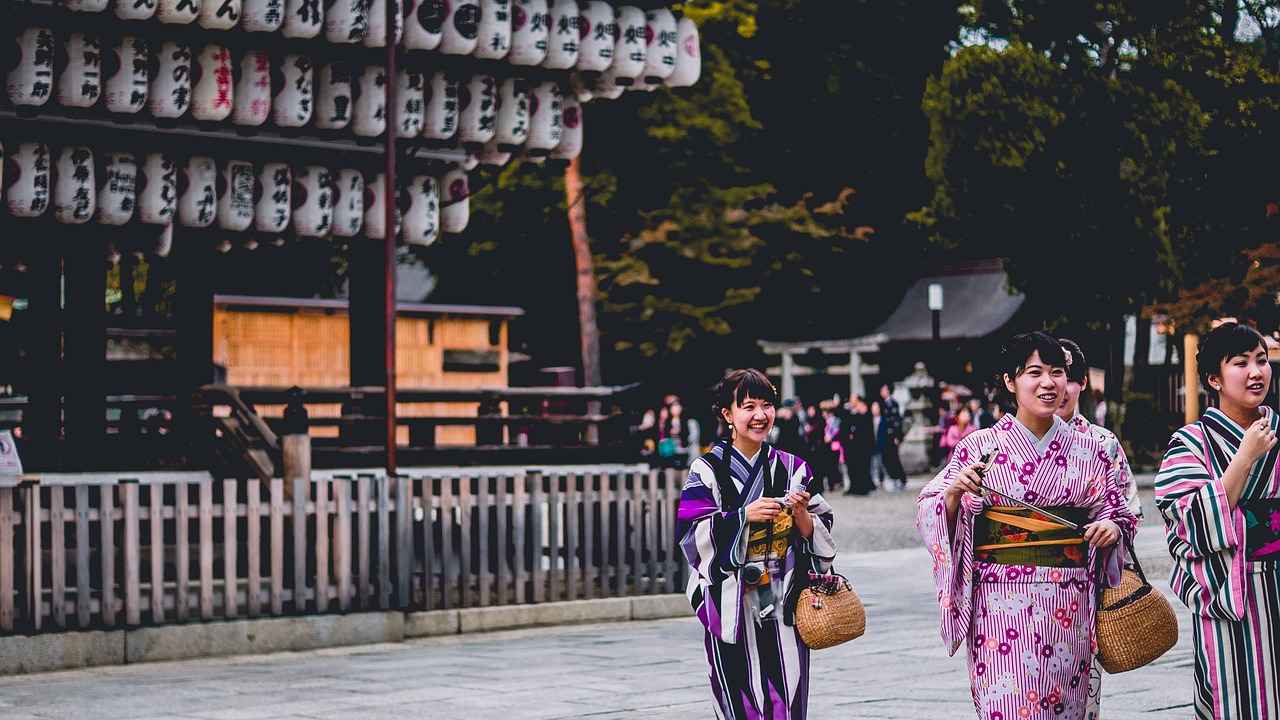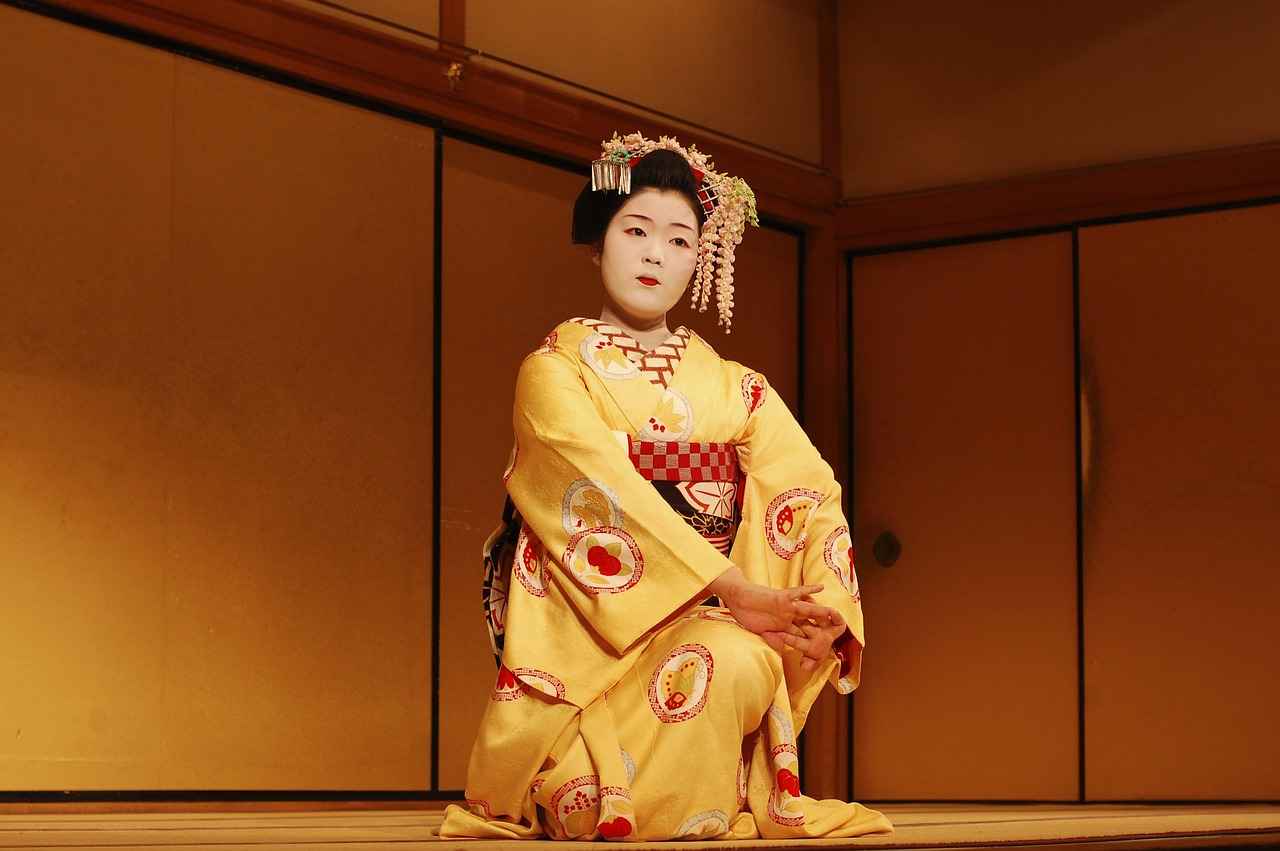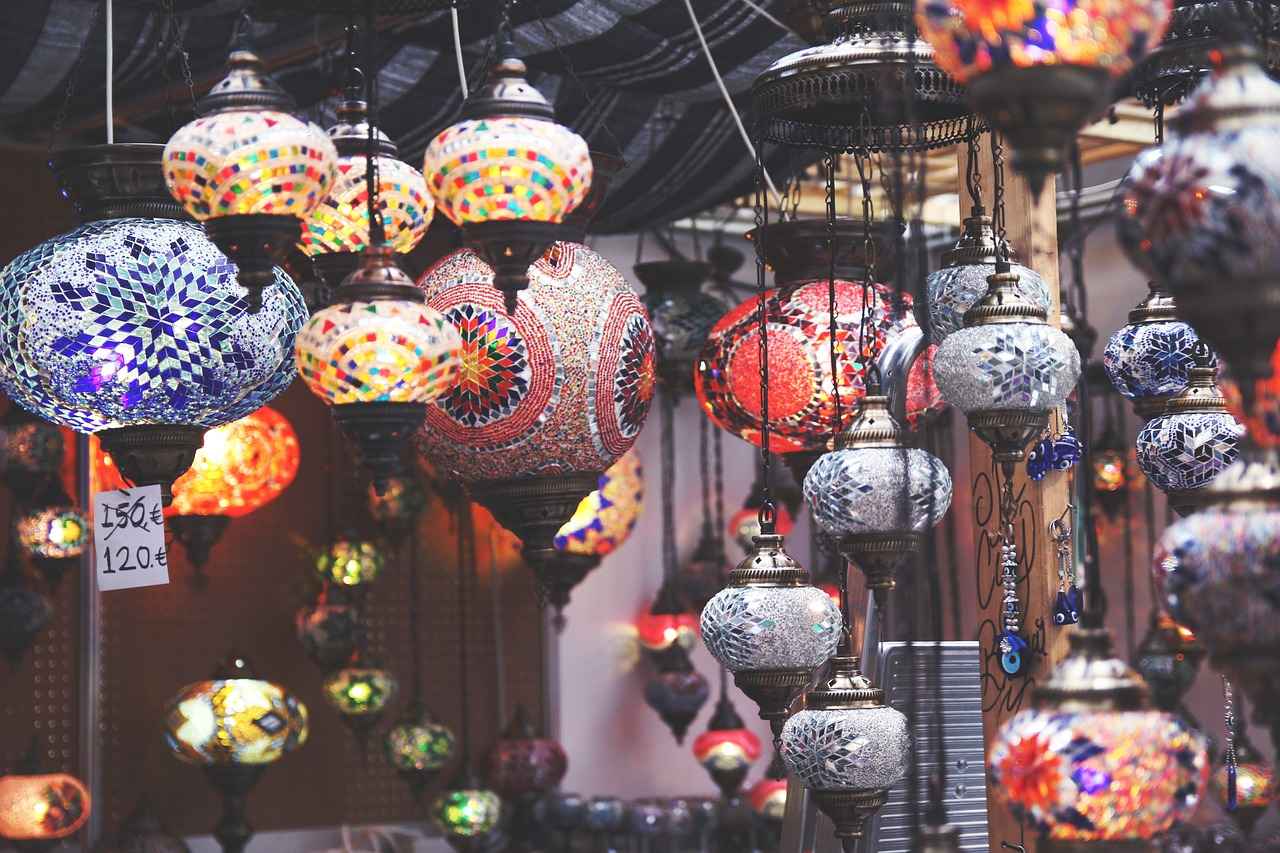This article delves into the rich history, varied styles, and techniques of wearing a traditional kimono, providing readers with practical insights to enhance their experience and appreciation of this cultural garment.
The History of Kimono
Understanding the origins of the kimono is essential to appreciating its cultural significance. The kimono has evolved over centuries, reflecting Japan’s social and artistic changes. Initially, it served as a functional garment, but over time, it transformed into a symbol of status and identity.
Different Types of Kimono
There are various types of kimono, each serving different occasions and purposes. Below are some of the most common styles:
- Furisode: A formal kimono characterized by long sleeves, often worn by young unmarried women during special occasions.
- Yukata: A casual summer kimono made of lightweight cotton, ideal for festivals and warm weather.
Choosing the Right Kimono
Selecting the appropriate kimono involves considering factors such as occasion, fabric, and personal style. Understanding the significance of colors and patterns can also enhance personal expression.
Essential Accessories for Kimono
Accessories play a crucial role in completing the kimono look. Key items include:
- Obi Belts: A wide belt that secures the kimono, available in various styles.
- Footwear Choices: Traditional footwear like geta and zori complements the kimono.
Proper Kimono Wearing Techniques
Mastering the art of wearing a kimono involves specific techniques. Here’s a brief guide:
- Start with the appropriate undergarments.
- Follow a step-by-step dressing guide to ensure a graceful appearance.
Conclusion: Embracing the Kimono Culture
Wearing a kimono is more than just fashion; it celebrates Japanese culture. By understanding its history, styles, and proper techniques, one can fully appreciate this timeless garment.

The History of Kimono
Understanding the origins of the kimono is essential for appreciating its profound cultural significance. This traditional garment has a rich history that spans over a thousand years, evolving alongside Japan’s social and artistic transformations.
The kimono’s roots can be traced back to the Heian period (794-1185), where it began as a simple garment. Initially, it was characterized by its straight seams and lack of a defined waist, allowing for ease of movement. As Japan transitioned through various historical periods, the kimono adopted different styles, fabrics, and colors, reflecting the changing aesthetics and values of society.
During the Edo period (1603-1868), the kimono became a symbol of status and identity. The introduction of vibrant patterns and elaborate designs showcased the wearer’s social standing. The use of color also held symbolic meanings; for example, red represented good fortune, while blue was associated with calmness and stability. This era also saw the emergence of distinct styles, such as the furisode, worn by young unmarried women, and the yukata, a casual summer kimono.
In modern times, the kimono continues to evolve, adapting to contemporary fashion while retaining its traditional essence. Today, it is worn during significant cultural events such as weddings, tea ceremonies, and festivals, serving as a reminder of Japan’s rich heritage.
Understanding the kimono’s historical context not only enhances one’s appreciation of its beauty but also highlights its role as a living artifact that embodies the spirit of Japanese culture.
In conclusion, the kimono is more than just a piece of clothing; it is a reflection of Japan’s history and cultural identity. By studying its origins and evolution, we gain a deeper understanding of the values and artistry that have shaped this iconic garment.

Different Types of Kimono
When it comes to traditional Japanese attire, the kimono stands out as a remarkable garment with a rich history and diverse styles. Each type of kimono serves a specific purpose, reflecting the wearer’s age, marital status, and the occasion. This article will delve into the most common types of kimono, highlighting their unique characteristics and uses.
The most formal type of kimono is the furisode, which features long, flowing sleeves. Typically worn by young, unmarried women, the furisode is a popular choice for significant events such as weddings and coming-of-age ceremonies. The designs are often intricate and vibrant, symbolizing youth and elegance.
- Design and Patterns: Furisode kimonos are adorned with elaborate motifs, often incorporating floral and seasonal themes, making them a stunning choice for celebrations.
- Occasions: Commonly worn during traditional festivals like Shichi-Go-San, the furisode celebrates milestones in a young woman’s life.
Another popular style is the yukata, a casual summer kimono made from lightweight cotton. The yukata is perfect for hot weather and is often worn at summer festivals.
- Patterns and Styles: Yukatas come in a wide array of colorful designs, frequently featuring floral patterns that embody the spirit of summer.
- Wearing Techniques: Donning a yukata involves simple techniques that allow for comfort while retaining its traditional aesthetic.
For more formal occasions, the tomesode is another significant type. This kimono, which has shorter sleeves, is typically worn by married women and is often characterized by its elegant designs and subdued colors.
- Design Elements: Tomesode often feature elaborate patterns at the hem and are considered appropriate for formal gatherings, such as weddings, where the wearer is not the main focus.
Lastly, there is the hifu, a type of kimono that is more like a jacket, often worn over other garments. This style is versatile and can be worn for both casual and formal occasions.
In conclusion, understanding the different types of kimono enhances appreciation for this beautiful garment. Each style not only serves a unique purpose but also carries cultural significance, making the kimono a timeless symbol of Japanese heritage.
Furisode
The Furisode: A Symbol of Youth and Elegance
The is a stunning and formal type of kimono that features long, flowing sleeves, making it a distinctive garment in traditional Japanese attire. It is primarily worn by young unmarried women during significant life events, such as weddings, coming-of-age ceremonies, and other celebratory occasions. The furisode not only reflects the beauty of Japanese culture but also serves as a rite of passage for women, marking their transition into adulthood.
| Characteristics | Description |
|---|---|
| Length of Sleeves | Long sleeves that extend past the wrist, symbolizing youth and unmarried status. |
| Designs | Intricate patterns often featuring floral motifs, seasonal themes, or symbolic imagery. |
| Color Palette | Vibrant colors that reflect the celebratory nature of the events for which they are worn. |
Design and Patterns
The designs of furisode kimonos are rich and varied, often incorporating intricate embroidery and bold colors. These designs not only enhance the aesthetic appeal but also carry cultural meanings. For instance, cherry blossoms may symbolize the fleeting nature of life, while cranes represent longevity and good fortune. Each pattern tells a story, making the choice of furisode a deeply personal decision.
Occasions for Wearing Furisode
- Seijin Shiki (Coming of Age Ceremony): A rite of passage for young women turning 20.
- Weddings: Often worn by brides or guests to celebrate the union.
- Shichi-Go-San: A traditional festival honoring the growth of children aged three, five, and seven.
Conclusion
Wearing a furisode is not merely about fashion; it is an expression of cultural heritage and personal identity. By understanding its significance, designs, and the occasions for which it is worn, one can truly appreciate the beauty and elegance of this traditional garment.
Design and Patterns
The furisode kimono is renowned for its stunning and intricate designs, which reflect the rich cultural heritage of Japan. These kimonos are often adorned with vibrant colors and elaborate patterns that symbolize various aspects of life, making them a striking choice for formal occasions.
Typically, the designs on a furisode can include:
- Floral Motifs: Flowers such as cherry blossoms, chrysanthemums, and peonies are common, representing beauty and the transient nature of life.
- Geometric Patterns: These designs often signify stability and balance, adding a modern touch to traditional aesthetics.
- Seasonal Themes: Patterns that reflect the four seasons, such as snowflakes for winter or leaves for autumn, are popular choices, celebrating the natural world.
- Symbolic Imagery: Various symbols, such as cranes for longevity and turtles for wisdom, are incorporated, conveying wishes for good fortune.
The choice of colors in a furisode is equally significant. Bright colors like red, pink, and yellow are often favored, as they are associated with youth and vitality. In contrast, darker hues can convey a sense of sophistication and maturity. The combination of colors and patterns creates a visual narrative, allowing the wearer to express their personality and emotions.
Moreover, the craftsmanship involved in creating these kimonos is exceptional. Artisans spend countless hours hand-painting or dyeing fabrics, ensuring that each piece is unique. This dedication to detail not only enhances the beauty of the garment but also preserves traditional Japanese textile techniques.
In summary, the design and patterns of furisode kimonos are a celebration of youth, elegance, and cultural heritage, making them a timeless choice for life’s most cherished moments.
Occasions for Wearing Furisode
The furisode is not just a beautiful garment; it holds deep cultural significance in Japan. Traditionally, this formal kimono, characterized by its long sleeves, is worn primarily by young unmarried women during important life events. These occasions symbolize milestones, celebrations, and rites of passage, making the furisode an essential part of Japanese culture.
One of the most notable events where furisode is worn is during Shichi-Go-San, a traditional Japanese festival that celebrates the growth of children at the ages of three, five, and seven. This festival is a rite of passage, where families dress their children in beautiful kimonos, including furisode for girls, to honor their transition into a new stage of life.
In addition to Shichi-Go-San, furisode is commonly seen at weddings, where young women may wear this elegant attire to celebrate the union of loved ones. The vibrant colors and intricate patterns of furisode not only highlight the beauty of the wearer but also enhance the festive atmosphere of the occasion.
Another significant event for wearing furisode is the Seijin Shiki or Coming of Age Ceremony, which marks the transition of young adults into maturity at the age of twenty. This ceremony is a pivotal moment in a young person’s life, and wearing a furisode symbolizes their new status as an adult in society.
Overall, the occasions for wearing furisode extend beyond mere fashion; they are deeply intertwined with cultural practices and the celebration of life’s important milestones. By donning this exquisite garment, individuals not only embrace their heritage but also honor the traditions that have been passed down through generations.
Yukata
The Yukata: A Summer Essential
The is not just a garment; it is a vibrant expression of Japanese culture, particularly during the summer months. This casual summer kimono, crafted from lightweight cotton, is designed to provide both comfort and style, making it the perfect choice for various outdoor activities, especially festivals.
What Makes the Yukata Unique?
- Lightweight Fabric: The cotton material allows for breathability, making it ideal for hot weather.
- Vibrant Patterns: Yukatas often feature colorful designs, including floral motifs and seasonal patterns, which reflect the lively spirit of summer.
- Easy to Wear: Unlike more formal kimonos, yukatas are simple to put on and take off, making them accessible for people of all ages.
Occasions for Wearing a Yukata
Yukatas are commonly worn during traditional Japanese festivals, known as hanabi (fireworks) festivals, summer fairs, and even at onsen (hot spring) resorts. Their casual nature allows wearers to enjoy the festivities without feeling restricted by formal attire.
How to Style Your Yukata
When wearing a yukata, accessorizing is key to achieving a complete look. Here are some essential tips:
- Obi: A wide sash, or obi, is used to secure the yukata and comes in various styles and colors.
- Geta or Zori: Traditional footwear complements the yukata and adds to the overall aesthetic.
- Hair Accessories: Floral hairpins or simple hairstyles can enhance the festive look.
Conclusion: Embrace the Yukata Experience
Wearing a yukata is a delightful way to embrace Japanese culture during the summer months. Its blend of comfort, style, and tradition makes it a beloved choice for both locals and visitors alike. Whether you are attending a festival or enjoying a summer evening, the yukata allows you to celebrate the season in style.
Yukata Patterns and Styles
Yukatas are a beloved aspect of Japanese culture, particularly during the summer months. These lightweight, casual kimonos are not only comfortable but also serve as a canvas for artistic expression through their vibrant patterns and designs. The aesthetic appeal of yukatas is enhanced by the variety of motifs they feature, with floral patterns being among the most popular.
The beauty of yukatas lies in their diverse range of colors and designs. Traditionally, these garments are adorned with a plethora of floral motifs, including cherry blossoms, chrysanthemums, and peonies. Each design is meticulously crafted, often reflecting the season or the occasion for which the yukata is worn. Here are some common patterns:
- Hanabi (Fireworks): Often used during summer festivals, this pattern symbolizes celebration and joy.
- Asagao (Morning Glory): A common motif in yukatas, representing resilience and beauty.
- Uroko (Scales): This geometric pattern is inspired by fish scales and is believed to bring good fortune.
- Seigaiha (Blue Ocean Waves): Representing peace and tranquility, this pattern is popular for its calming aesthetic.
In addition to floral and traditional patterns, modern yukatas may feature abstract designs or even popular culture references, appealing to a younger audience. The choice of colors can also vary widely, with some opting for bright, bold hues while others prefer more subdued tones.
Wearing a yukata is not just about style; it is a way to connect with Japanese traditions and celebrate cultural heritage. Whether worn at a summer festival, a fireworks display, or simply during a warm evening, yukatas offer a unique blend of comfort and elegance.
Ultimately, the choice of a yukata’s pattern and style can reflect personal taste, making it a versatile garment that resonates with both tradition and modernity.
How to Wear a Yukata
Wearing a yukata can be a delightful experience, especially during the warm summer months when festivals and outdoor events are in full swing. This traditional Japanese garment is not only comfortable but also embodies a rich cultural heritage. Here are some essential steps to help you wear a yukata with style and confidence.
- Choose the Right Yukata: Select a yukata that suits your personal style and the occasion. Look for vibrant colors and patterns that reflect the festive atmosphere.
- Put on the Yukata: Start by slipping the yukata over your shoulders. Ensure that the fabric is evenly distributed on both sides for a balanced look.
- Fold and Adjust: Cross the left side over the right side, which is the traditional way to wear a yukata. Adjust the length so that it falls just above your ankles.
- Secure with an Obi: Use an obi (a wide belt) to secure the yukata. Wrap the obi around your waist, pulling it snugly to create a comfortable fit. Tie a knot at the back or front, depending on your preference.
- Accessorize: Complement your yukata with traditional accessories such as geta (wooden sandals) or obijime (decorative cords) to enhance your overall look.
Additionally, it’s important to pay attention to the folding and tying techniques of the yukata. Proper folding ensures that the garment sits well on your body, while the right tying technique keeps it secure throughout your activities. Make sure to practice these techniques to achieve a comfortable fit while preserving the yukata’s traditional aesthetic.
In conclusion, wearing a yukata is a celebration of Japanese culture that combines beauty and comfort. By following these simple steps, you can confidently embrace this elegant garment during summer festivities.
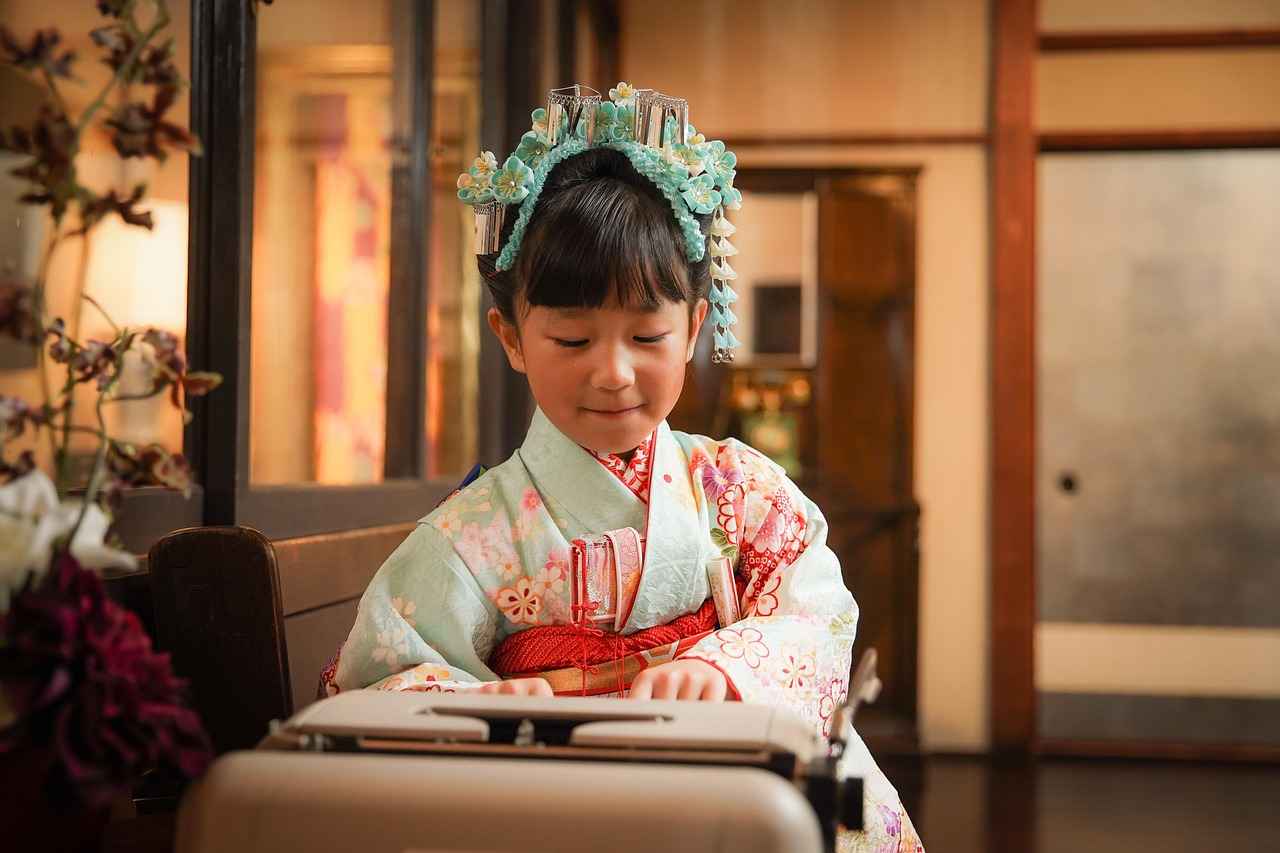
How to Choose the Right Kimono
Choosing the right kimono is an art that combines tradition with personal expression. It is essential to take into account various factors to ensure that the selection not only suits the occasion but also reflects your unique style. Here are some key considerations:
- Occasion: The first step in selecting a kimono is to determine the event you will be attending. Formal occasions such as weddings or tea ceremonies typically require more elaborate kimonos, like the furisode, which features long sleeves and intricate designs. Conversely, for casual events or summer festivals, a lightweight yukata is more appropriate.
- Fabric: The fabric of the kimono plays a significant role in its overall appearance and comfort. Silk kimonos are luxurious and often worn for formal events, while cotton kimonos are breathable and ideal for warmer weather. Additionally, synthetic fabrics can offer affordability and ease of care.
- Color and Pattern: Color selection is not just about aesthetics; it also holds cultural significance. For instance, red often symbolizes joy and happiness, making it a popular choice for celebrations. Understanding the meanings behind different patterns can enhance your connection to the garment and its cultural roots.
- Personal Style: Ultimately, your personal style should shine through in your kimono choice. Whether you prefer bold, vibrant patterns or subtle, muted colors, select a kimono that resonates with your personality. Accessorizing with the right obi and footwear can further enhance your look.
By considering these factors—occasion, fabric, color, and personal style—you can make a well-informed decision when selecting your kimono. This thoughtful approach ensures that your choice is not only suitable but also a true reflection of who you are.
Fabric Types
When it comes to traditional kimonos, the choice of fabric is paramount, as it significantly influences both the comfort and formality of the garment. Different fabrics not only affect how the kimono feels against the skin but also determine its suitability for various occasions.
- Silk: Renowned for its luxurious texture and elegant drape, silk is the most formal fabric used in kimonos. It is often chosen for special events such as weddings and ceremonies. The sheen of silk enhances the intricate patterns and colors, making it a popular choice for furisode kimonos.
- Cotton: A staple for casual wear, cotton kimonos, such as yukatas, are lightweight and breathable, making them perfect for summer festivals. They are easy to care for and come in a variety of vibrant patterns, allowing for personal expression while maintaining comfort.
- Synthetic Materials: With advancements in textile technology, synthetic fabrics have become increasingly popular. These materials often mimic the appearance of silk or cotton but offer greater durability and ease of maintenance. They are versatile and can be used for both casual and formal kimonos, appealing to a broader audience.
In addition to the fabric type, the weight and texture of the material play crucial roles in how the kimono falls and moves with the wearer. Heavier fabrics tend to drape more elegantly, while lighter options provide a more relaxed fit. Ultimately, selecting the right fabric is essential for achieving the desired look and feel, enhancing the overall kimono experience.
Color and Pattern Selection
Choosing the right colors and patterns when wearing a kimono is not merely a matter of aesthetics; it is a vital aspect of personal expression and cultural representation. Each color and pattern carries its own meanings and associations, deeply rooted in Japanese tradition. Understanding these meanings is essential for anyone looking to wear a kimono with confidence and respect.
Colors in kimono fashion are often symbolic. For instance, red is associated with happiness and good fortune, making it a popular choice for celebratory occasions such as weddings. In contrast, blue symbolizes calmness and stability, often chosen for more subdued events. Black is traditionally reserved for funerals and mourning, while white represents purity and is commonly worn during Shinto ceremonies.
Patterns also play a significant role in conveying messages. Floral designs, such as cherry blossoms, symbolize the transient beauty of life, while seigaiha (waves) patterns represent peace and tranquility. Understanding these cultural significances allows individuals to select patterns that resonate with their personal or familial heritage.
When choosing a kimono, consider the occasion and the message you wish to convey. For formal events, opting for a kimono with intricate patterns and rich colors is advisable. For casual outings, lighter colors and simpler designs can provide a relaxed but stylish look. Additionally, seasonal considerations can influence color choices; for example, vibrant colors are favored in spring, while earthy tones are more appropriate for autumn.
Ultimately, the selection of colors and patterns should reflect not only personal style but also an understanding of their cultural significance. This thoughtful approach to kimono fashion can enhance your overall experience and appreciation of this beautiful garment.

Essential Accessories for Kimono
When it comes to wearing a kimono, accessories play a crucial role in completing the overall look. From the elegant obi belts to the traditional footwear, each accessory contributes to a polished and authentic appearance. Understanding the significance and variety of these accessories can elevate the kimono experience.
The obi is not just a functional piece that secures the kimono; it is also a statement accessory. Available in a multitude of styles, colors, and materials, the obi can dramatically change the aesthetic of the outfit. Some popular obi styles include:
- Fukuro Obi: A formal choice, often adorned with intricate designs.
- Hanhaba Obi: A more casual option, typically narrower and easier to tie.
- Obiage: A decorative scarf that adds flair and is usually tucked under the obi.
Traditional footwear is essential when wearing a kimono. The two most common types are:
- Geta: Wooden sandals that elevate the wearer, perfect for outdoor events.
- Zori: Flat sandals made from various materials, offering a more formal look.
Choosing the right footwear not only complements the kimono but also ensures comfort, especially during long events.
In addition to obi belts and footwear, several other accessories can enhance the kimono look:
- Haneri: A decorative collar that adds a pop of color and style.
- Koshihimo: A sash used to secure the kimono before tying the obi.
- Obijime: A cord that adds a finishing touch to the obi.
In conclusion, the right accessories can transform a simple kimono into a stunning ensemble. By paying attention to details like the obi and footwear, one can achieve a look that is not only stylish but also authentic to the rich traditions of Japanese culture.
Obi Belts
are a fundamental component of traditional Japanese kimono attire, serving both functional and aesthetic purposes. These wide belts not only secure the kimono in place but also enhance the overall look, making them essential for any kimono ensemble.
Available in a variety of styles, materials, and colors, the obi can significantly impact the appearance of the kimono. From luxurious silk to more casual cotton, the choice of material often reflects the formality of the occasion. For instance, a formal event might call for an ornate obi with intricate patterns, while a casual outing could be complemented by a simpler design.
- Types of Obi
- Fukuro Obi: A versatile and elegant option, often used for formal occasions.
- Nagoya Obi: A popular choice for everyday wear, featuring a pre-stitched design that simplifies the tying process.
- Haneri Obi: A shorter obi, typically worn with yukata or casual kimono.
When selecting an obi, it is crucial to consider factors such as color coordination and pattern compatibility with the kimono. A well-chosen obi can elevate the outfit, creating a harmonious and visually appealing appearance.
How to Wear an Obi
1. Begin by wrapping the obi around your waist, ensuring it sits comfortably.2. Cross the ends at the back and bring them to the front.3. Tie a secure knot, adjusting the fabric to create a smooth finish.4. Make any necessary adjustments to ensure the obi complements the silhouette of the kimono.
In conclusion, the obi is not merely a belt; it is a symbol of tradition and style that adds depth to the kimono experience. Understanding its significance and mastering the art of wearing it can greatly enhance one’s appreciation for this beautiful cultural garment.
Footwear Choices
are an essential aspect of traditional kimono attire, playing a significant role in both aesthetics and comfort. Among the most notable types of traditional footwear are geta and zori, each with its unique characteristics and cultural significance.
Geta are wooden sandals that elevate the wearer above the ground, making them ideal for wearing with kimono, especially in wet conditions. Their design features two wooden blocks, or “teeth,” that provide stability and support. Traditionally, geta are worn with the haneri (the collar of the kimono) tucked in, allowing for a graceful appearance when walking. The sound of geta clacking against the pavement adds a rhythmic charm to the overall outfit.
Zori, on the other hand, are flat sandals typically made from rice straw or synthetic materials. They are more versatile than geta and are often worn for formal occasions. Zori come with a fabric thong that fits comfortably between the toes, providing a snug fit while allowing for ease of movement. Their understated elegance complements a variety of kimono styles, making them a popular choice for weddings and ceremonies.
| Footwear Type | Material | Occasions |
|---|---|---|
| Geta | Wood | Casual, Outdoor Events |
| Zori | Rice Straw/Synthetic | Formal, Ceremonial Events |
Choosing the right footwear is crucial to achieving the desired look and comfort level while wearing a kimono. It is important to consider the occasion, the style of the kimono, and personal comfort when selecting between geta and zori. Ultimately, the right footwear not only enhances the overall aesthetic of the outfit but also allows the wearer to embrace the cultural essence of traditional Japanese dress.
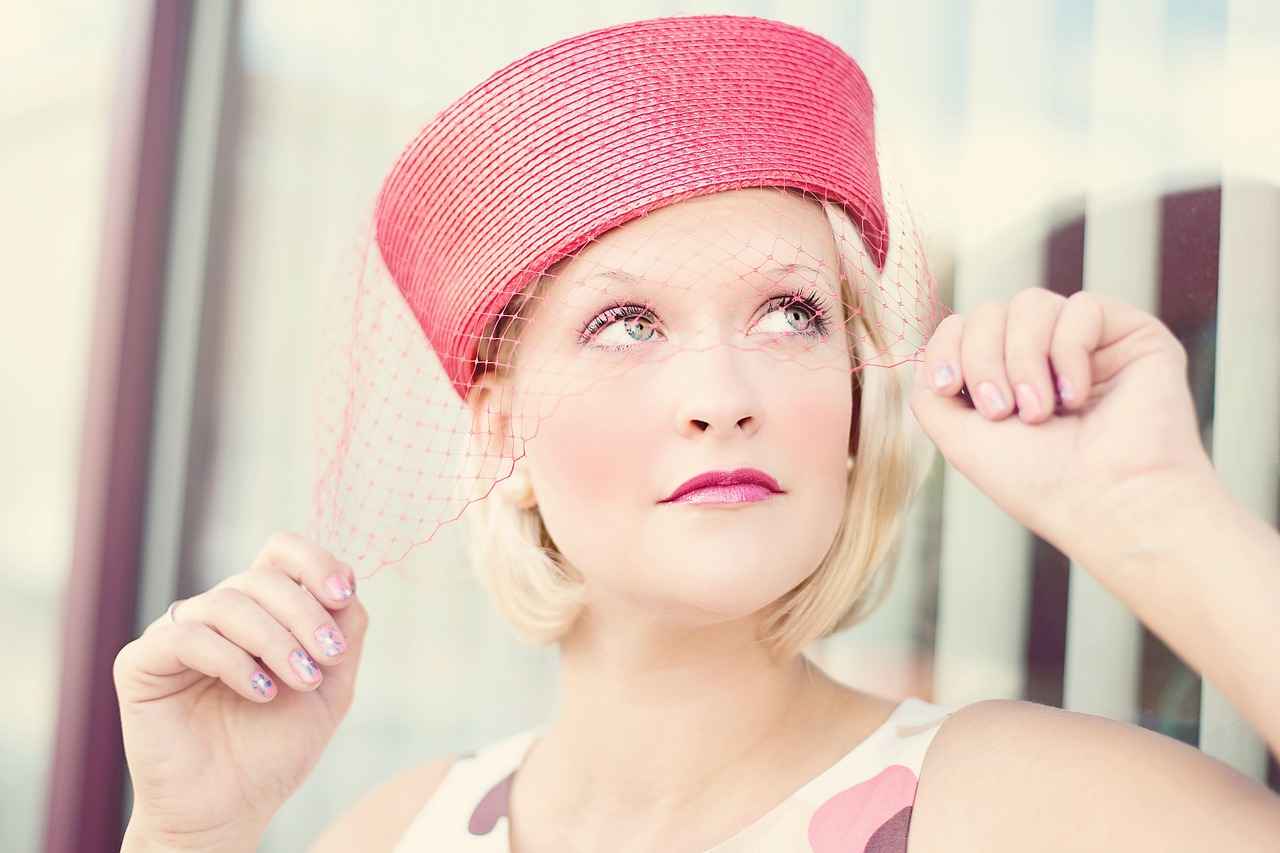
Proper Kimono Wearing Techniques
Mastering the art of wearing a kimono is a delicate process that requires attention to detail and an understanding of cultural significance. This traditional Japanese garment is not merely an outfit; it is a symbol of history and heritage. To wear a kimono gracefully, one must learn specific techniques that encompass draping, tying, and adjusting the fabric to ensure a respectful and elegant appearance.
- Draping Techniques: The first step in wearing a kimono is proper draping. The fabric should be wrapped around the body in a way that allows for ease of movement while maintaining the garment’s structure. It is essential to ensure that the left side overlaps the right, as this is the traditional way to wear a kimono.
- Tying the Obi: The obi, or belt, is a crucial component of the kimono. Tying the obi correctly not only secures the kimono in place but also adds an aesthetic appeal. There are various styles of obi knots, with the taiko knot being one of the most popular for formal occasions. The knot should be centered at the back and adjusted for comfort.
- Adjusting the Length: The length of the kimono sleeves and hem should be adjusted according to personal preference and the occasion. For example, longer sleeves are often reserved for formal events, while shorter sleeves may be more suitable for casual outings.
- Accessorizing: Accessories play a vital role in enhancing the overall look. Items such as obijime (decorative cords), haneri (collars), and traditional footwear like geta or zori can elevate the outfit and add a personal touch.
In conclusion, mastering the techniques of wearing a kimono is essential for anyone wishing to embrace this beautiful cultural garment. By focusing on draping, tying, and accessorizing, one can achieve a look that is not only visually appealing but also respectful of the rich traditions behind the kimono.
Step-by-Step Dressing Guide
Wearing a kimono can seem daunting for beginners, but with a clear step-by-step guide, anyone can master this traditional garment. Below is a comprehensive outline to help you dress in a kimono, ensuring comfort and style.
- Choose the Right Undergarments: Start with a kimono undergarment called ‘juban.’ This lightweight garment prevents sweat from staining the kimono and provides a smooth base.
- Put on the Kimono: Slip the kimono over your shoulders with the left side wrapped over the right. This is crucial, as wearing it the other way is reserved for funerals.
- Adjust the Length: Hold the kimono at your waist and adjust the length. It should ideally reach your ankles. Use a koshihimo (a thin belt) to secure it at the waist, allowing for a comfortable fit.
- Wear the Obi: The obi is a wide belt that adds structure to your outfit. Wrap it around your waist, ensuring it sits snugly over the kimono. There are various tying techniques, with the taiko obi being a popular choice for beginners.
- Final Adjustments: Make sure the kimono is straight and the obi is secure. Adjust the sleeves and the hem to ensure they fall gracefully.
- Add Accessories: Complete your look with traditional accessories like geta (wooden sandals) or zori (flat sandals), and consider adding a haneri (collar) for an extra touch of elegance.
By following these steps, you can confidently wear a kimono and appreciate its beauty and cultural significance. Remember, practice makes perfect, so don’t hesitate to try dressing in a kimono multiple times to refine your technique!
Common Mistakes to Avoid
Wearing a kimono is a beautiful way to connect with Japanese culture, yet it can be challenging for those unfamiliar with its intricacies. Identifying and avoiding common pitfalls in kimono wearing can significantly enhance the overall experience and ensure a respectful representation of this cultural attire. Below are some key mistakes to be mindful of:
- Incorrect Size Selection: Choosing a kimono that does not fit properly can lead to discomfort and an unflattering appearance. It is essential to measure yourself accurately and select a size that allows for ease of movement while maintaining the traditional silhouette.
- Neglecting Undergarments: The right undergarments are crucial for achieving the desired shape and fit of the kimono. Wearing appropriate layers, such as a juban (kimono undergarment), helps maintain the structure and elegance of the outfit.
- Poor Obi Tying: The obi, or sash, is a vital component of kimono attire. Improper tying can lead to an unkempt look. Ensure you practice the correct techniques for tying the obi securely and neatly, as it significantly impacts the overall presentation.
- Inappropriate Footwear: Footwear can make or break a kimono ensemble. Traditional options like geta or zori should be chosen based on the occasion and the type of kimono being worn. Avoid modern shoes that clash with the traditional aesthetic.
- Ignoring Cultural Significance: Each kimono has its own cultural context, including colors and patterns that signify different meanings. Understanding these elements is essential for wearing a kimono respectfully and appropriately.
By being aware of these common mistakes, you can approach wearing a kimono with confidence and grace. Remember, the goal is to honor the rich tradition behind this garment while enjoying the beauty it brings to any occasion.

Conclusion: Embracing the Kimono Culture
Wearing a kimono transcends mere fashion; it embodies a profound celebration of Japanese culture. This iconic garment is steeped in history and tradition, representing not only a style of dress but also a rich tapestry of cultural significance. Understanding the historical context, various styles, and proper wearing techniques allows individuals to fully appreciate this timeless attire.
The kimono’s origins can be traced back to the Heian period (794-1185), evolving through various historical eras and reflecting Japan’s social and artistic transformations. Each style of kimono tells a story, from the elaborate designs of the furisode, worn by young women, to the casual elegance of the yukata, perfect for summer festivals.
Different types of kimono cater to various occasions. For instance, the furisode is characterized by its long sleeves and vibrant patterns, symbolizing youth and elegance, making it a popular choice for significant celebrations such as weddings or coming-of-age ceremonies. In contrast, the yukata is a more casual garment, often worn during summer festivals, made from lightweight cotton and adorned with colorful floral motifs.
Choosing the right kimono involves understanding various factors, including fabric types and color meanings. For example, silk kimonos are typically reserved for formal events, while cotton yukatas are ideal for casual gatherings. Accessories such as obi belts and traditional footwear like geta or zori are essential for completing the look, ensuring both comfort and authenticity.
Mastering the art of kimono wearing requires knowledge of specific techniques, from proper draping to tying the obi. Common mistakes, such as incorrect folding or mismatched accessories, can detract from the overall appearance and cultural respect the kimono represents.
In conclusion, wearing a kimono is more than just putting on a piece of clothing; it is a deeply rooted expression of Japanese heritage. By understanding its history, styles, and techniques, individuals can honor this beautiful garment and the culture it represents, making every occasion a celebration of tradition.
Frequently Asked Questions
- What is a kimono?
A kimono is a traditional Japanese garment characterized by its long sleeves and wrap-around design. It symbolizes Japanese culture and has evolved over centuries, reflecting various social and artistic changes.
- How do I choose the right kimono for an occasion?
Selecting the right kimono involves considering the event, fabric type, and personal style. For formal events, opt for a silk kimono, while casual occasions might call for a lightweight cotton yukata.
- What are the essential accessories for wearing a kimono?
Key accessories include the obi belt, which secures the kimono, and traditional footwear like geta or zori. These elements not only enhance the look but also maintain the cultural essence of the outfit.
- Can I wear a kimono casually?
Absolutely! The yukata is a casual version of the kimono, perfect for summer festivals and relaxed gatherings. It’s made from lightweight cotton and comes in vibrant patterns, making it both stylish and comfortable.
- What are common mistakes to avoid when wearing a kimono?
Common mistakes include improper fitting, incorrect obi tying, and neglecting to wear appropriate undergarments. Taking time to learn the proper techniques ensures a graceful and respectful appearance.
